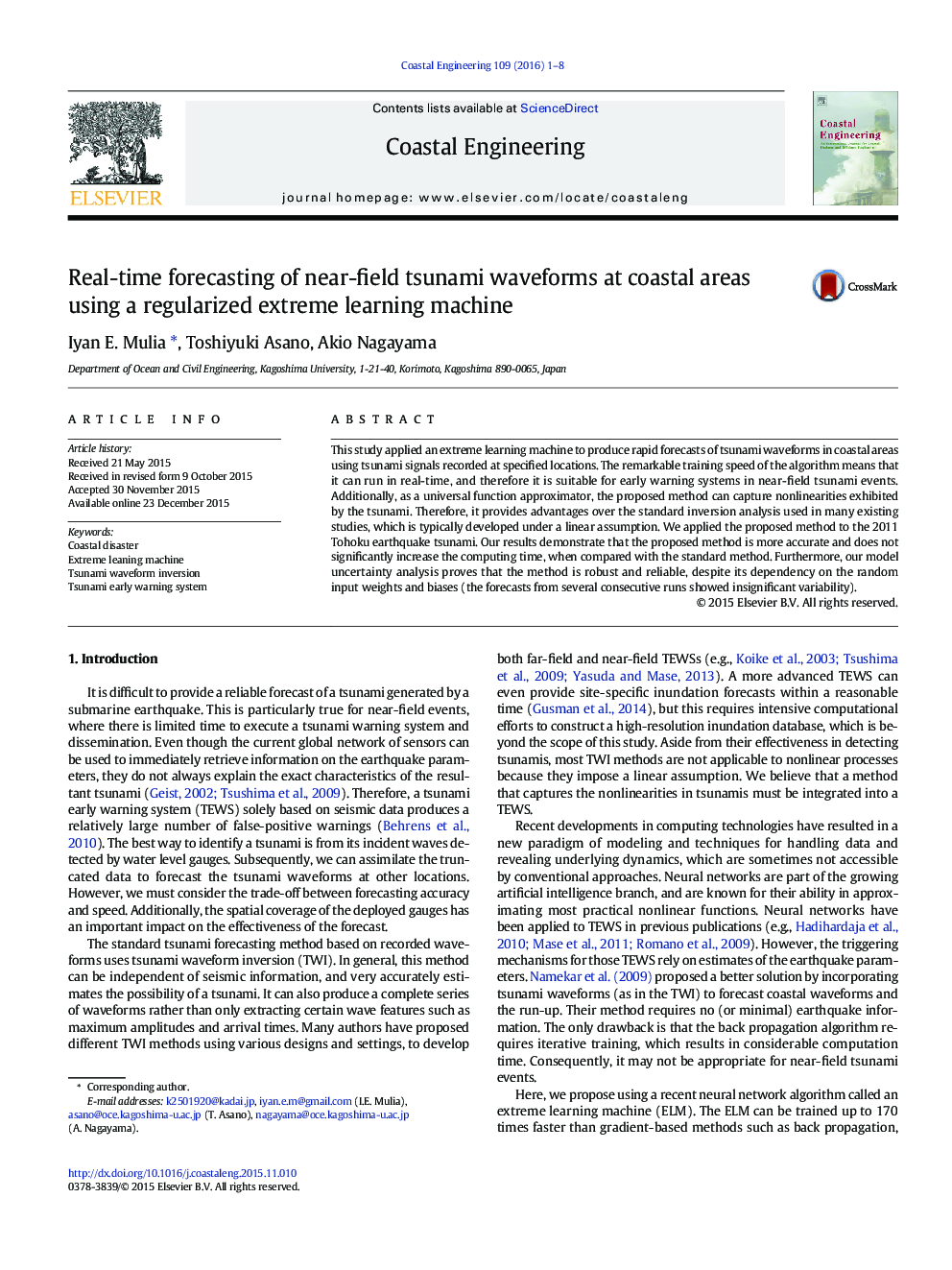| Article ID | Journal | Published Year | Pages | File Type |
|---|---|---|---|---|
| 1720572 | Coastal Engineering | 2016 | 8 Pages |
•The nonlinear transfer function in the ELM can improve the accuracy.•The speed of the proposed method is comparable to the standard linear approximation.•The ELM possesses important features for tsunami early warning system.
This study applied an extreme learning machine to produce rapid forecasts of tsunami waveforms in coastal areas using tsunami signals recorded at specified locations. The remarkable training speed of the algorithm means that it can run in real-time, and therefore it is suitable for early warning systems in near-field tsunami events. Additionally, as a universal function approximator, the proposed method can capture nonlinearities exhibited by the tsunami. Therefore, it provides advantages over the standard inversion analysis used in many existing studies, which is typically developed under a linear assumption. We applied the proposed method to the 2011 Tohoku earthquake tsunami. Our results demonstrate that the proposed method is more accurate and does not significantly increase the computing time, when compared with the standard method. Furthermore, our model uncertainty analysis proves that the method is robust and reliable, despite its dependency on the random input weights and biases (the forecasts from several consecutive runs showed insignificant variability).
